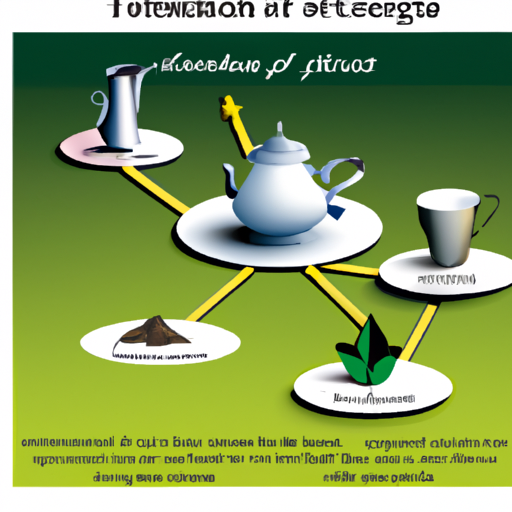The Teaconomy: A Peek Into The Economics of Tea Production
As we sip that steaming cup of tea, it's time to stir the pot and dive into the overlooked aspects of tea production – the economics associated with one of the world's most beloved beverages. While we've covered topics like tea history, climate change's impact, and ethical labor concerns, this time, we'll be brewing an economic storm by exploring supply, demand, and the influence of market forces on the global tea industry. So, ready your kettles and put those thinking caps on – it's "teaconomy" time.
The Supply Side of Tea
First and foremost, let's discuss the primary tea producers. The top five countries responsible for producing tea are China, India, Kenya, Sri Lanka, and Vietnam. Each region has its distinct flavors and styles, derived from local terroir, unique production methods, and diverse cultivars, contributing to the rich tapestry of the tea world. Let's break down the tea-chest and have a look at some numbers:
| Country | Production (metric tons) | Share of global tea production |
|---|---|---|
| China | 2,415,000 | 43% |
| India | 1,277,000 | 23% |
| Kenya | 492,000 | 9% |
| Sri Lanka | 315,000 | 6% |
| Vietnam | 229,000 | 4% |
Table 1: Top five tea-producing countries (2021)
As evident from the table, China is the undisputed king of tea production, accounting for 43% of global output. The combined total of these five countries represents a staggering 85% of the world's tea production. So, it's safe to say that supply chain disruptions in these countries can create quite a ripple effect on the international tea stage.
Tea Demands Attention
Now, on to the tealtail-end of the spectrum – demand. Naturally, demand for tea varies due to cultural preferences, seasonal changes, lifestyle trends, and diverse consumption patterns. While global demand for tea continues to rise, unique niches and emerging flavors are becoming increasingly popular. For instance, the consumption of non-traditional teas like purple tea from Kenya is gaining traction, while matcha has become a staple for health-conscious consumers.
So, who's demanding all this tea? The largest consumers of tea worldwide in terms of per capita consumption are Turkey, Ireland, the United Kingdom, Iran, and Russia. Though China and India lead in absolute terms, they rank lower in per capita consumption due to their large populations.
Price Volatility, Market Forces, and More
Now that we have an idea of the key players in tea production and consumption, what happens when market forces come into play? Price volatility, supply disruptions, and changing economic landscapes have a profound impact on the tea industry.
For instance, erratic weather patterns attributed to climate change have caused crop losses in some regions, affecting global supply and pushing up tea prices. Additionally, political unrest and trade restrictions can influence tea trade and disrupt the industry.
Supply chain disruptions due to recent global events have exposed vulnerabilities in the tea sector, with small tea farmers bearing the brunt of this impact. Reliance on large producers in key tea regions may pose risks to the industry's stability and make it vulnerable to fluctuations in supply, demand, and prices.
Here's an idea to steep in - diversification in tea production could ensure a more stable industry, reduce dependence on dominant players, and create opportunities for innovation in the marketplace.
Beyond the Cup: Generating Impact Through Tea
While tea is undoubtedly a prominent global commodity, it's essential to consider how it can create a more significant impact beyond its consumption. For example, tea production can contribute to sustainable development goals by promoting responsible land use, ethical labor practices, and environmental conservation. The tea industry also employs millions of workers worldwide and provides livelihoods to countless farmers and their families.
Conclusion: The Teaconomy & You
Considering the economics of tea is crucial for better understanding and appreciating the value of our favorite brew. It's clear that showcasing lesser-known tea varieties, encouraging more sustainable approaches to tea production, and supporting small tea farmers can help make a difference. So, next time you take a sip of that delightful cuppa, spare a thought for the "teaconomy" implications and choose to vote for a more sustainable and equitable future with your wallet.
We'd love to hear your thoughts about the economics of tea! Join the conversation in the discussion area below and let us know – do you seek out ethically sourced teas or explore niche varieties in your tea cupboard? Let's get the ideas brewing!
